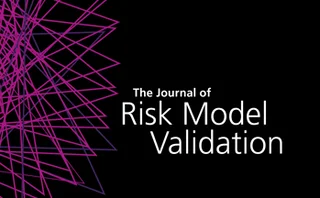Technical paper/Credit risk
Review of credit risk and credit scoring models based on computing paradigms in financial institutions
This paper provides an overview of some prominent credit scoring models used in financial institutions and provides an insight into how the use and integration of popular computing paradigms based on NNs, machine learning, game theory and BDA in credit…
Empirical validation of the credit rating migration model for estimating the migration boundary
In this paper, a structural model for credit rating migration is developed and validated, by which the migration boundary is recovered for the first time.
Small and medium-sized enterprises that borrow from "alternative" lenders in the United Kingdom: who are they?
This study provides a general overview of the external financing landscape for the UK SMEs and an exploratory analysis of the SME portfolio of one of the alternative lenders in the United Kingdom.
A numerical simulation approach to study systemic risk in banking systems
The authors introduce a simple numerical algorithm to study banking systems subject to credit risk. The algorithm is based on a model that is completely defined by only two parameters.
The cost of hedging XVA
HVA is framed consistently with other valuation adjustments
Credit migration: generating generators
A stochastic time change helps the modelling of rating transition
Research on listed companies’ credit ratings, considering classification performance and interpretability
This study uses the correlation coefficient and F-test to select the initial features of a credit evaluation system, and then a validity index for a second selection to ensure that the feature system has the optimum ability to discriminate in determining…
Beyond the contract: client behavior from origination to default as the new set of the loss given default risk drivers
In this paper, we expand the modeling process by constructing a set of client-behavior-based predictors that can be used to construct more precise models, and we investigate the economic justifications empirically to examine their potential usage.
A hybrid model for credit risk assessment: empirical validation by real-world credit data
This paper examines which hybridization strategy is more suitable for credit risk assessment in the dynamic financial world.
A framework to analyze the financial effects of climate change
Starting with an expert assessment of the climate risk factors over a specified horizon, then moving to a description of the expected number of climate events and the severity of the losses if an event occurs, the authors describe a framework to analyze…
Estimating financial risks from the energy transition: potential impacts from decarbonization in the European power sector
The authors present an integrated assessment of energy transition risk that links future energy scenarios to a structural economic model.
From incurred loss to current expected credit loss: a forensic analysis of the allowance for loan losses in unconditionally cancelable credit card portfolios
The authors analyze the performance of the CECL framework under plausible assumptions about allocations of future payments to existing credit card loans, a key implementation element.
Statistical properties of the population stability index
This paper aims to fill a gap in the literature by providing statistical properties of the population stability index (PSI) and some recommendations on its use.
Client engineering of XVA
A client’s guide to reducing XVA in times of need
Supervisory bank risk early warning modeling: an examiner’s first line of defense
The results of this paper show that robust forward-looking statistical models are superior to backward-looking assessments of supervisory compliance, which could lead to less regulatory burden when integrated into the examination process, particularly at…
The impact of data aggregation and risk attributes on stress testing models of mortgage default
In this paper, the authors investigate how data aggregation and risk attributes affect the development and performance of stress testing models by studying residential mortgage loan defaults.
Stress testing household debt
The authors estimate a county-level model of household delinquency and use it to conduct “stress tests” of household debt.
A FAVAR modeling approach to credit risk stress testing and its application to the Hong Kong banking industry
In this paper, a credit risk stress testing model based on the factor-augmented vector autoregressive (FAVAR) approach is proposed to project credit risk loss under stressed scenarios.
Credit exposure under the new standardized approach for counterparty credit risk: fixing the treatment of equity options
The new standardized approach for measuring counterparty credit risk exposures (SA-CCR) will replace the existing regulatory standard methods for exposure quantification. This paper provides empirical evidence that the SA-CCR parameters are not aligned…
Corporate default risk modeling under distressed economic and financial conditions in a developing economy
The authors create stepwise logistic regression models to predict the probability of default for private nonfinancial firms under distressed financial and economic conditions in a developing economy. Their main aim is to identify and interpret the…
A joint model of failures and credit ratings
The authors propose a novel framework for credit risk modeling, where default or failure information and rating or expert information are jointly incorporated in the model.
The impact of corporate social and environmental performance on credit rating prediction: North America versus Europe
The authors quantify the extent to which the quality of credit rating predictions improves by integrating measures of corporate social performance (CSP) in an established credit risk model. Their analysis provides comprehensive evidence of the…
Elliptical and Archimedean copula models: an application to the price estimation of portfolio credit derivatives
This paper explores the impact of elliptical and Archimedean copula models on the valuation of basket default swaps.
IFRS 9 compliant economic adjustment of expected credit loss modeling
This paper presents an International Financial Reporting Standard 9 (IFRS 9) compliant solution related to expected credit loss modeling.




